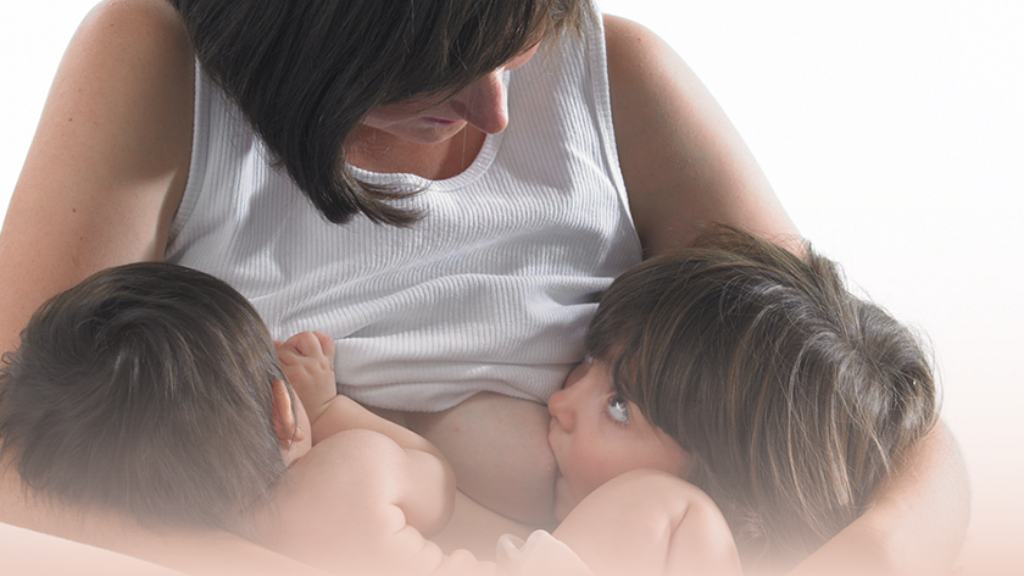
Table of Contents
If you breastfeed while you are pregnant, you might be curious about what occurs following the birth of your child. Tandem breastfeeding is the practice of breastfeeding a new baby while an older child is still nursing. This might happen following a pregnancy and the birth of a new kid, or after you’ve adopted a new infant and are still feeding your older child.
Many factors will likely need to be taken into account when contemplating tandem nursing. Since you are a breastfeeding mother, you understand the significance of breastfeeding to your bond with your older kid. You should carefully assess the changing demands of both of you before considering whether to wean him or to continue nursing him alongside a new nurse.
In this blog, we will figure out what tandem nursing is, and what are its benefits and impact. Additionally, we’ll also take a look at the safety concerns of tandem breastfeeding.
What is Tandem Breastfeeding?
Breastfeeding two or more children at once, regardless of their ages, is known as tandem nursing. This typically happens when you have an older baby, toddler, or child that you are breastfeeding and you bring in a new baby.
However, if you are feeding multiples or giving birth to multiples, you may find yourself nursing more than two children. Most moms only tandem nurse two children — an infant and an older kid.
Tandem Nursing: Benefits
To promote the development of strong, mature immune systems, the World Health Organization advises nursing or administering breastmilk for at least two years. That is made possible for a newborn by tandem feeding, even if there is a second pregnancy.
The following are just a few of the advantages of tandem breastfeeding.
1. Promotes Milk Production
Tandem nurses can generate twice as much milk to feed two children. This is because the more milk is fed to your little one, the more will be produced.
2. Reduces Duct Obstruction and Engorgement
Toddlers assist in relieving engorgement, which makes it simpler for newborns to latch later without experiencing a quick feed.
3. Bonding between the Kids
Lastly, it’s not unusual for a toddler who has already been weaned to crave nursing again after witnessing their mommy nursing the new baby at home. It may be a great way for the three of you to bond if you feel comfortable with tandem feeding.
Impact of Emotions on Tandem Nursing
Are you windering if tandem feeding is the best option for you? And how should you do it effectively? Well, there are a number of factors to take into consideration:
- Age and emotional development of the eldest child
- Do you have assistance with breastfeeding?
- Knowing your own limitations, emotional boundaries, and requirements
- Feeding them together or separately; efficiency and together time versus one-on-one time
The elder sibling can use the nursing connection as a fantastic transitioning tool to welcome the new sibling into the family. Whether you feed them together or separately depends on how you want to feed them and what works for you. Feeding both at once may make meals highly efficient in terms of both the actual feeding and keeping both amused.
However, you may realise that feeding each of the kids separately works better. Why? It allows you to better meet their particular feeding needs and spend more time relaxing. Any method that doesn’t work for you is the clear no-no!
Safety Regarding Tandem Breastfeeding
Is tandem nursing safe? Yes!
In the majority of cases, breastfeeding during a healthy, low-risk pregnancy and tandem feeding subsequently do not result in premature labor or delivery. You might know that oxytocin, a hormone that signals to breastfeed, is comparable to the hormonal changes that occur before labor and delivery.
While high oxytocin is present, the body compartmentalizes it, delaying the onset of contractions until it is necessary to do so. In other words, nursing and rising oxytocin levels won’t cause labor to start too soon. On the other hand, when the moment is perfect, feeding and nipple stimulation can promote a natural commencement of labor and contractions.
It’s crucial to address risks and nursing concerns with your healthcare practitioner if you are thought to be at increased risk for preterm labor, particularly owing to hormonal effects, such as low progesterone.
Closing Thoughts
For many mothers and their children, tandem breastfeeding is a fantastic alternative. It may, however, occasionally be isolating. Please always remember that you are not alone.
Many mothers tandem nurse, although you seldom see or hear about it since most breastfeeding of older children takes place in private. Due to the taboo nature of tandem feeding with toddlers or older children, many mothers choose not to disclose their practice.
Consider seeking assistance from a lactation consultant or breastfeeding counselor if you choose to tandem nurse. Finding your tribe online or joining a local breastfeeding support system may be very beneficial.
Seeking support will be critical to your success. Because while tandem nursing may be fantastic, it is not a breeze when you first start off.









